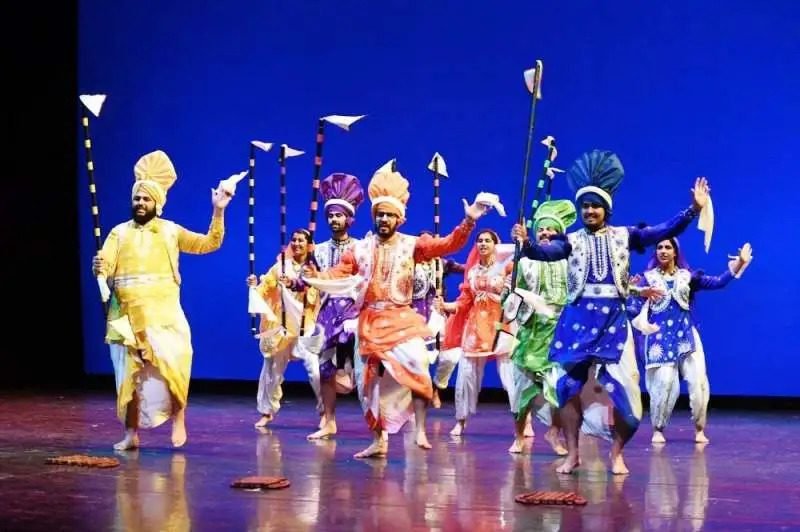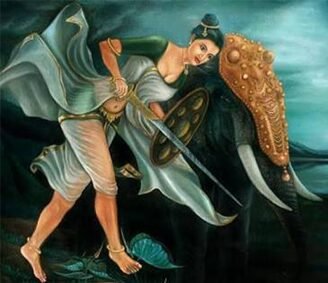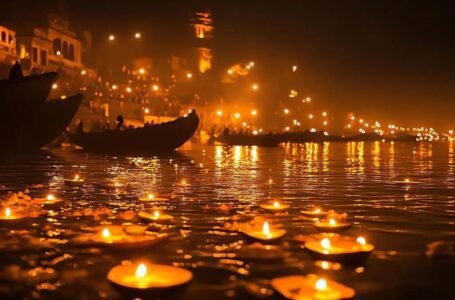Jhumar: A Timeless Folk Dance of Punjab

India’s cultural landscape is adorned with a multitude of folk dances, each carrying the essence of a region’s traditions, emotions, and heritage. Among these, Jhumar, a folk dance from Punjab, stands out for its grace and rhythmic charm. Performed predominantly during the harvest season, Jhumar celebrates the simple joys of rural life. With its roots tracing back to Balochistan and Multan, this dance form has transcended boundaries, becoming a cherished part of Punjabi culture.
In addition to its popularity in Punjab, Jhumar has versions in Haryana and Jharkhand, where it is known as “Jhumair.” In Haryana, young married women perform it as part of the region’s cultural tapestry, often referred to as Hariyanvi Gidda. However, this article will focus on the Jhumar of Punjab, exploring its origins, movements, costumes, and cultural significance.

The Origin of Jhumar
The name Jhumar is derived either from Jhum, meaning “swaying,” or from the ornament Jhumar, a decorative piece worn on the forehead by women. The dance finds its origins in the Balochistan and Multan regions, now part of Pakistan. Initially a Baluchi tribal dance, it was brought to India by traders, eventually weaving itself into Punjab’s folk traditions.
Jhumar songs are the soul of the dance. These songs have a swaying rhythm that resonates with both the performers and the audience. The themes of these songs often revolve around love, life, and the cyclical rhythm of nature, mirroring the swaying motions of the dance itself.
Jhumar: The Dance of Celebration
Jhumar is intrinsically linked to the agrarian culture of Punjab, reflecting the lives and emotions of the farming community. Performed during harvest festivals, weddings, and fairs (melas), it is a dance of happiness and communal celebration. Unlike the energetic and acrobatic moves of Bhangra, Jhumar is characterized by its slow, graceful movements, symbolizing the rhythm of rural life.
The dance is usually performed by men, often involving three generations—grandfather, father, and son—dancing together. This intergenerational participation underscores the continuity of tradition and the shared joy of celebration.
The Movements and Technique
The essence of Jhumar lies in its simplicity and grace. The dancers perform in a circular formation around a drummer, who stands at the center, setting the rhythm with his drum beats. The dancers’ movements are fluid and rhythmic, with the primary focus on arm gestures and synchronized footwork.

Key elements of the dance include:
- Forward and Backward Steps: The dancers move their feet forward and backward in unison, turning alternately to the left and right.
- Arm Gestures: While moving, the dancers raise one hand, gesturing gracefully, while placing the other hand on their hip.
- Mimicking Agricultural Activities: The dance often incorporates movements that mimic plowing fields, sowing seeds, and threshing grain. These gestures pay homage to the agricultural roots of the community.
From time to time, individual dancers or small groups step into the center to showcase their skills. This improvisation adds a dynamic element to the performance, highlighting the talent of the dancers. The dancers also make a unique “chzi chzi” sound, resembling the shake of a tambourine, which enhances the rhythm and grace of the performance.

Costumes of Jhumar
The costumes used in Jhumar are similar to those of Bhangra, featuring vibrant and colorful attire that enhances the visual appeal of the dance. The performers typically wear:
- A patka or turban on the head, symbolizing tradition and pride.
- A lungi, a wrap-around lower garment, allowing ease of movement.
- A long tunic and waistcoat, completing the traditional Punjabi look.
These costumes not only add to the aesthetic charm of Jhumar but also reflect the cultural identity of Punjab.
Types of Jhumar
Jhumar is not a singular dance form; it has several variations, each suited to different occasions and moods. The main types of Jhumar include:
- Satluj Jhumar: Named after the Satluj River, this type has a calming and serene rhythm, often performed during peaceful celebrations.
- Beas Jhumar: Inspired by the Beas River, this variation has a livelier tempo, symbolizing joy and festivity.
- Chenab Jhumar: Originating near the Chenab River, this type features a blend of soulful and celebratory elements.
- Multani Jhumar: With roots in Multan, this variation retains the traditional rhythms and movements of the dance’s origins.
- Jhumar Taari: Known for its distinctive use of clapping (taari), this type adds an auditory layer to the performance.
Each type of Jhumar carries its own unique essence, contributing to the diversity and richness of this dance form.

Cultural Significance
Jhumar is more than just a dance; it is a celebration of life, nature, and community. It serves as a medium for storytelling, preserving folk songs and traditions that have been passed down through generations. The dance captures the spirit of rural Punjab, reflecting the emotions, aspirations, and resilience of its people.
The communal aspect of Jhumar fosters a sense of unity and belonging. Whether performed at weddings, harvest festivals, or village fairs, it brings people together, creating an atmosphere of joy and harmony.
The Decline of Jhumar
Despite its cultural significance, Jhumar is slowly fading into obscurity. Several factors contribute to this decline:
- Competition from Bhangra: The high-energy and globally popular Bhangra has overshadowed Jhumar, which is often perceived as less exciting due to its slower pace.
- Urbanization: The migration of rural communities to urban areas has disrupted the traditional settings where Jhumar thrived.
- Modern Entertainment: Younger generations, influenced by modern music and dance forms, show little interest in preserving traditional folk arts.
- Lack of Promotion: Unlike Bhangra, Jhumar has not received adequate institutional support or media attention.

Efforts to Revive Jhumar
To ensure the survival of Jhumar, concerted efforts must be made to promote and preserve this dance form. Here are some steps that can be taken:
- Cultural Festivals: Including Jhumar in national and international cultural festivals can provide it with a platform to reach wider audiences.
- Workshops and Training Programs: Organizing workshops in schools and colleges can encourage younger generations to learn and appreciate the dance.
- Media Representation: Featuring Jhumar in films, documentaries, and digital content can generate awareness and interest.
- Government Support: Providing financial and logistical support to Jhumar performers can help sustain the tradition.
- Academic Research: Documenting the history, techniques, and variations of Jhumar can aid in its preservation.

In conclusion, Jhumar is a timeless expression of Punjab’s cultural heritage, embodying the joys and struggles of rural life. Its graceful movements, soulful songs, and deep-rooted traditions make it a unique and invaluable part of India’s folk arts. However, the challenges of modernization and changing cultural preferences have put this beautiful dance form at risk.
By reviving and promoting Jhumar, we not only preserve a dance form but also honor the legacy of Punjab’s agrarian communities. Let us celebrate Jhumar as a symbol of unity, tradition, and the enduring spirit of rural India, ensuring its rhythm continues to sway generations to come.


